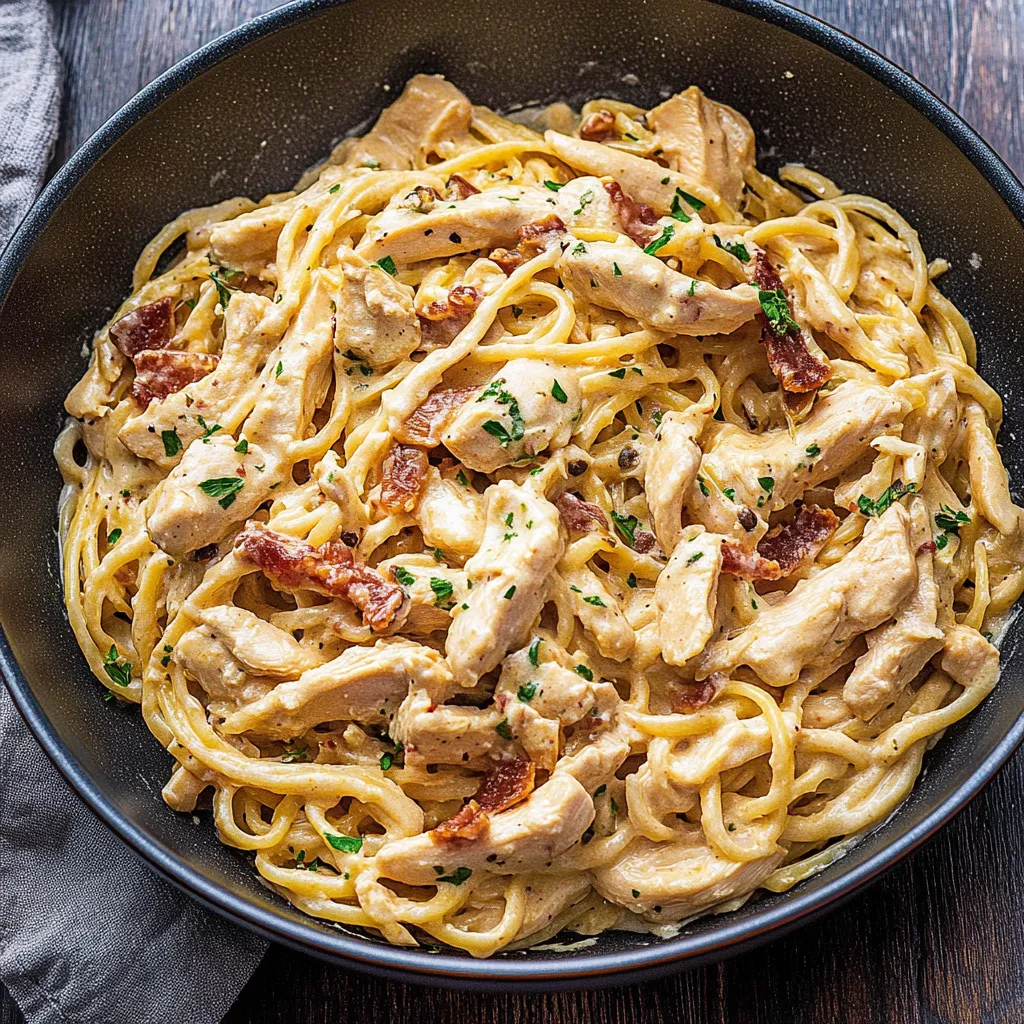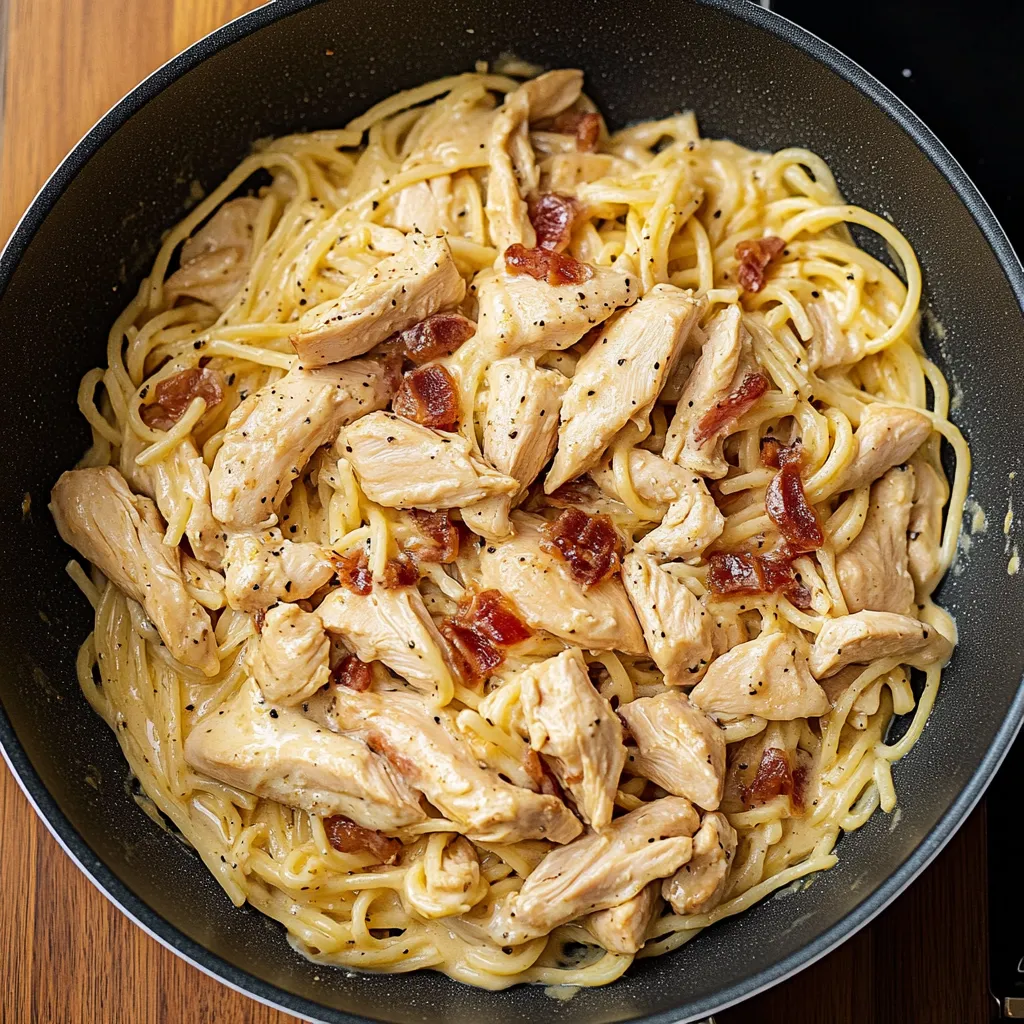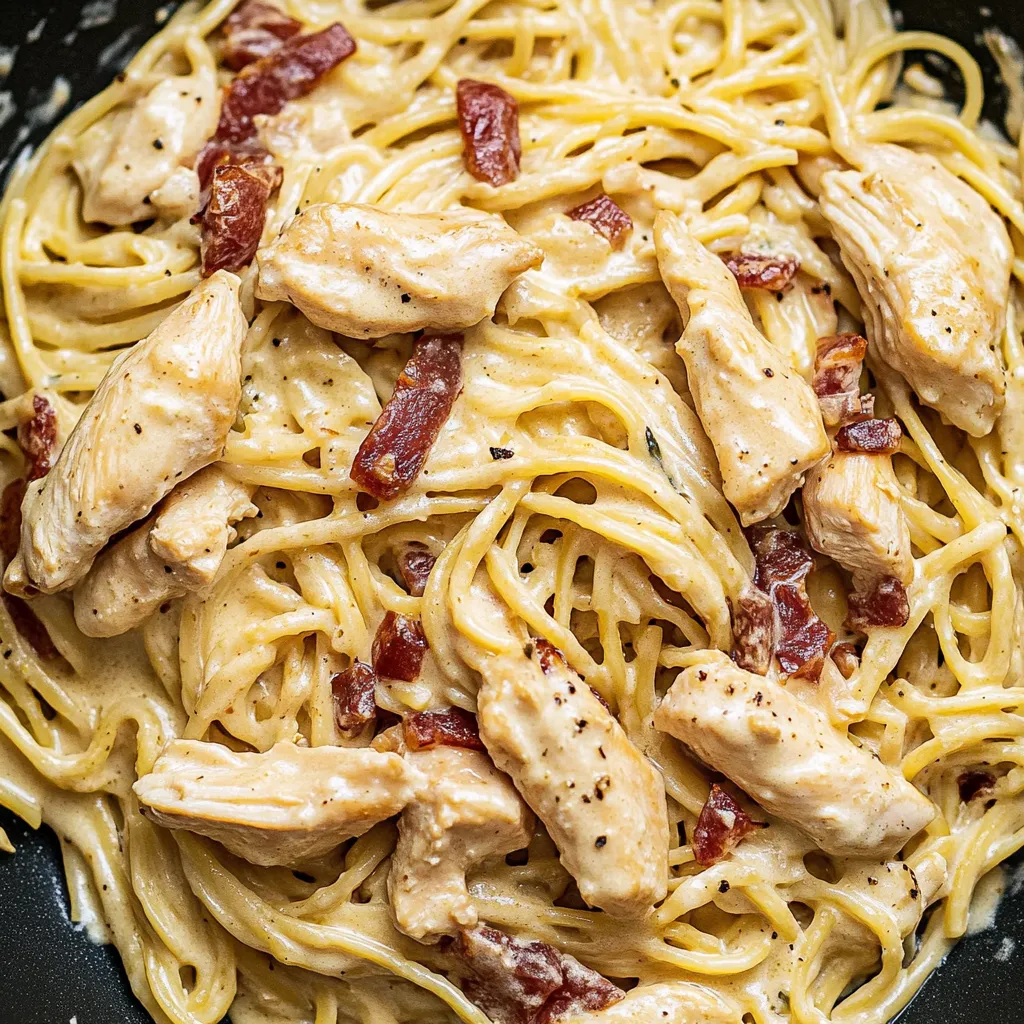 Pin it
Pin it
Creamy chicken carbonara transforms simple ingredients into a luxurious pasta dish that brings the essence of Roman cuisine right to your dinner table. This variation combines crispy bacon, tender chicken, and perfectly cooked pasta in a silky sauce made from whisked eggs and aged Parmesan cheese, creating a symphony of flavors that dance on your tongue.
The first time I made this carbonara, my kitchen filled with the intoxicating aroma of sizzling bacon and garlic. My family couldn't wait to dig in, and now it's become our go-to comfort meal for those evenings when we crave something special without spending hours in the kitchen.
Essential Ingredients and Selection Tips
- Pasta: Choose long, sturdy noodles like linguine or bucatini - their texture helps the sauce cling perfectly to every strand.
- Thick-cut bacon: Look for meaty, well-marbled slices that will render plenty of flavorful fat as they cook.
- Farm-fresh eggs: Select eggs with bright, orange yolks for that signature golden sauce.
- Aged Parmesan: Buy a wedge and grate it fresh - the flavor difference is remarkable compared to pre-grated options.
- Fresh garlic: Choose firm, heavy heads with tight cloves for the most aromatic results.
 Pin it
Pin it
Detailed Cooking Instructions
- Step 1: Start with perfectly cooked pasta
- Bring a large pot of water to a rolling boil before adding generous amounts of salt. Cook your pasta just until al dente, stirring occasionally to prevent sticking. Before draining, reserve a full cup of that starchy cooking water - it's liquid gold for our sauce.
- Step 2: Create the foundation
- Dice your bacon into uniform pieces for even cooking. Cook slowly over medium heat to render the fat completely. The bacon should be crispy but not burnt - this takes patience.
- Step 3: Prepare the signature sauce
- Whisk eggs and cheese together until completely smooth. Add freshly cracked black pepper - be generous here. Keep this mixture close to room temperature for better incorporation.
- Step 4: Master the chicken
- Cut chicken into bite-sized pieces for quick, even cooking. Season well with salt and pepper. Cook in the bacon fat until golden brown and just cooked through. Add garlic only in the final minutes to prevent burning.
- Step 5: The crucial finale
- Lower the heat significantly before adding the egg mixture. Toss continuously to create a silky sauce. Add pasta water gradually until you achieve the perfect consistency.
 Pin it
Pin it
I've discovered that the quality of Parmesan makes an enormous difference in this dish. After experimenting with various ages of cheese, I found that 24-month aged Parmigiano-Reggiano creates an unmatched depth of flavor that my guests always notice.
The Art of Seasoning
The right balance of salt throughout each component elevates this dish from good to extraordinary. Season the pasta water generously, season the chicken properly, and taste before adding any final salt at the end.
The Power of Temperature
Understanding heat control is crucial for carbonara success. Too hot, and you'll end up with scrambled eggs; too cool, and the sauce won't come together properly.
 Pin it
Pin it
Professional Tips
- Always bring eggs to room temperature before starting - they'll create a smoother sauce
- Save some extra pasta water - you might need it to loosen the sauce if it sits for a few minutes
- Let the pan cool slightly before adding the egg mixture to prevent scrambling
After years of making this dish, I've learned that carbonara is more than just a recipe - it's a technique that rewards attention to detail and patience. The magic happens in those final moments when the eggs transform into a silky sauce, and all the elements come together in perfect harmony. This dish never fails to create moments of pure joy around my dinner table, and I hope it does the same for yours.
Frequently Asked Questions
- → Can I make carbonara without cream?
- Yes! Traditional carbonara doesn't use cream. The sauce gets its creaminess from eggs and cheese alone. Cream is optional in this recipe.
- → Why did my eggs scramble in the sauce?
- This happens when the pan is too hot. Let it cool for 2-3 minutes before adding eggs, and keep tossing quickly to prevent scrambling.
- → Can I use a different type of pasta?
- Yes, while linguine or spaghetti are traditional, you can use any long pasta like fettuccine or bucatini.
- → What can I substitute for bacon?
- You can use pancetta or guanciale as traditional Italian alternatives to bacon. They all work great in this recipe.
- → Why do I need to save pasta water?
- The starchy pasta water helps create a smooth, creamy sauce and prevents it from becoming too thick.
